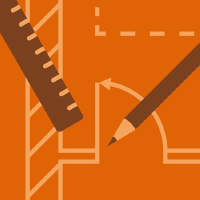Topic Menu
► Topic MenuTopic Editors


2. Psychology Department, Webster University, Athens Campus, Ipitou 9, 10557 Athens, Greece
3. The Human Architecture & Planning Institute, Inc., 43 Bradford St., Concord, MA 01742, USA


Architectures, Materials and Urban Design

Topic Information
Dear Colleagues,
A new era of adaptive design has opened up, with a recently developed mathematical framework now being justified by neuroscience experiments. Combining tools coming from biophilia, design patterns, and fractals, new buildings and spaces can be shaped to a create healing environments. The same rules can be used to humanize and renovate older structures when their time comes for periodic repair and upgrade. This Special Issue will focus on the results of Christopher Alexander and those of many other researchers who identified the necessary qualities for structures to have a positive emotional impact on people. The design toolkit also includes most traditional architectures from all over the world. By extending those tried-and-tested design toolkits into new territories, the mathematical toolkit empowers innovative practitioners to create never-before-seen buildings. Importantly, new designs, if they follow the new guidelines, will share the same high degree of adaptivity as the best-loved heritage buildings.
The human brain is a social engagement system hardwired for attachment. Recent research uses biometrics, including eye-tracking emulation software, to document the characteristics of successful built environments. Instrumentation reveals how fixation points draw the human gaze pre-attentively (unconsciously) to provide these requisite attachments. By contrast, unsuccessful geometries stress the nervous system because they cannot define adequate fixation points. The fragmentation of urban space in the 21st century is a consequence of buildings lacking measurable human qualities surrounding open spaces. Design trends responsible for cutting social engagement include the elimination of fixation points for stylistic reasons. An increasingly palpable reality of the city is as a place in which humans do not belong. Short-sighted planning processes are producing a new fragmented spatial order that is aggravating socio-urban inadequacies. The analysis of urban needs requires new methods of analysis that utilize the latest scientific tools made available in recent years.
This Topic welcomes contributions on how to change the basic epistemology of design. The goal is to abandon an abstract, visual approach, to instead embrace adaptivity connected with human needs and the natural environment. We need to reorient design away from fashionable, but energivorous, buildings and urban developments (driven by short-term real-estate speculation) towards evidence-based thinking. We should be skeptical about technological solutions that try to maintain the Industrial–Modernist model as a design paradigm. Some of those proposals are useful only as add-ons to solutions grounded in low-cost practices, while others deceptively continue today’s unsustainable practices.
Sustainable urban systems are widely talked about but not yet implemented. Three problems prevent this: (i) a very poor understanding of the system dynamics that permit a city to function in a more sustainable manner; (ii) an architectural approach to planning, which focuses almost exclusively on individual buildings instead of a connected urban fabric; (iii) the belief that we can solve the problems of sustainability through technology alone. Encouraged by industrial society and a superficial, formal approach to design, these factors work against long-term sustainability. We have to learn to optimize the energy and network flows that drive a city. True sustainability can only arise by implementing low-tech, low-cost, low-maintenance solutions.
Prof. Dr. Nikos A. Salingaros
Dr. Alexandros A. Lavdas
Dr. Michael W. Mehaffy
Dr. Ann Sussman
Topic Editors
Keywords
- architecture
- design
- patterns
- urbanism
- urban design
- complexity
- neuroscience
- eye-tracking
- fractals
- symmetry
- cognitive neuroscience
- neuroaesthetics
Participating Journals
| Journal Name | Impact Factor | CiteScore | Launched Year | First Decision (median) | APC |
|---|---|---|---|---|---|

Architecture
|
1.4 | 2.2 | 2021 | 34.2 Days | CHF 1200 |

Buildings
|
3.1 | 4.4 | 2011 | 14.9 Days | CHF 2600 |

Land
|
3.2 | 5.9 | 2012 | 16 Days | CHF 2600 |

Sustainability
|
3.3 | 7.7 | 2009 | 19.3 Days | CHF 2400 |

Urban Science
|
2.9 | 3.7 | 2017 | 25.5 Days | CHF 1600 |

Preprints.org is a multidisciplinary platform offering a preprint service designed to facilitate the early sharing of your research. It supports and empowers your research journey from the very beginning.
MDPI Topics is collaborating with Preprints.org and has established a direct connection between MDPI journals and the platform. Authors are encouraged to take advantage of this opportunity by posting their preprints at Preprints.org prior to publication:
- Share your research immediately: disseminate your ideas prior to publication and establish priority for your work.
- Safeguard your intellectual contribution: Protect your ideas with a time-stamped preprint that serves as proof of your research timeline.
- Boost visibility and impact: Increase the reach and influence of your research by making it accessible to a global audience.
- Gain early feedback: Receive valuable input and insights from peers before submitting to a journal.
- Ensure broad indexing: Web of Science (Preprint Citation Index), Google Scholar, Crossref, SHARE, PrePubMed, Scilit and Europe PMC.

